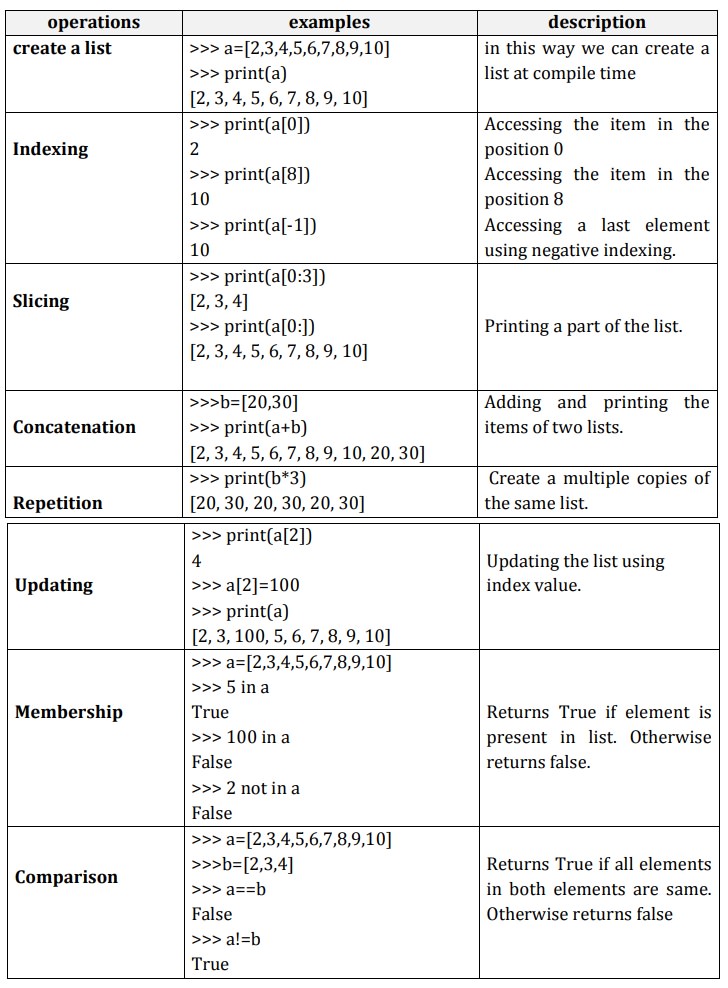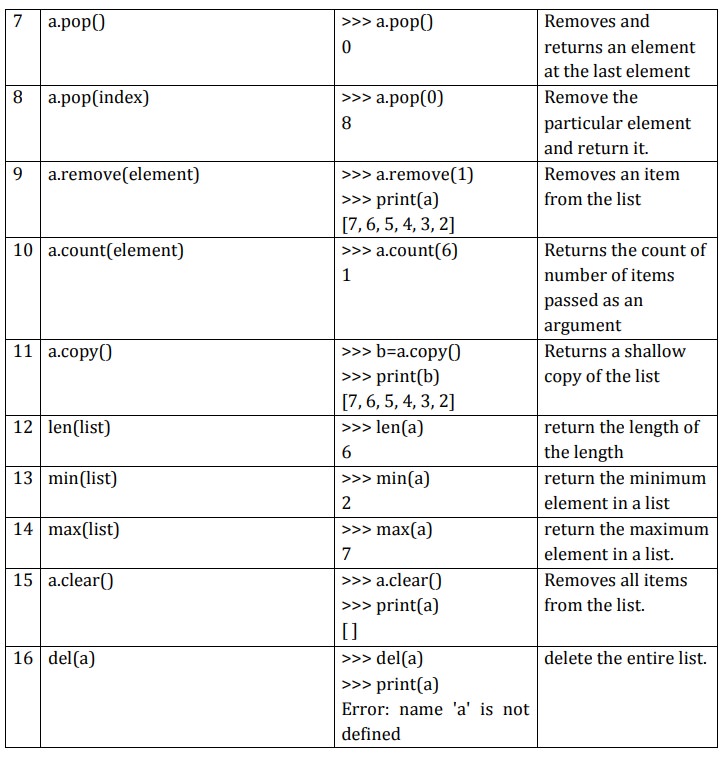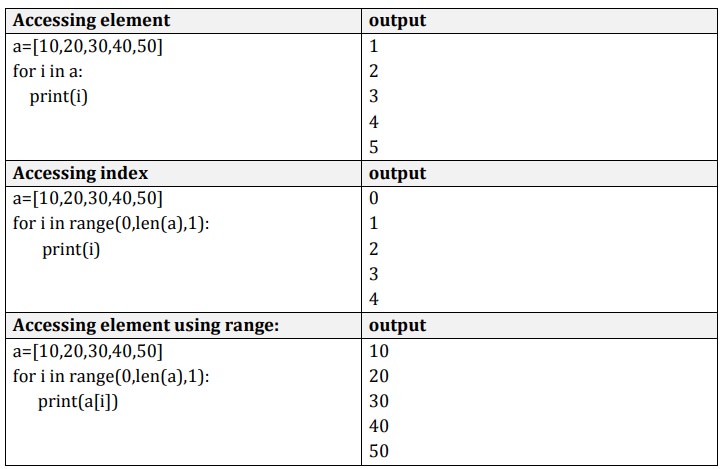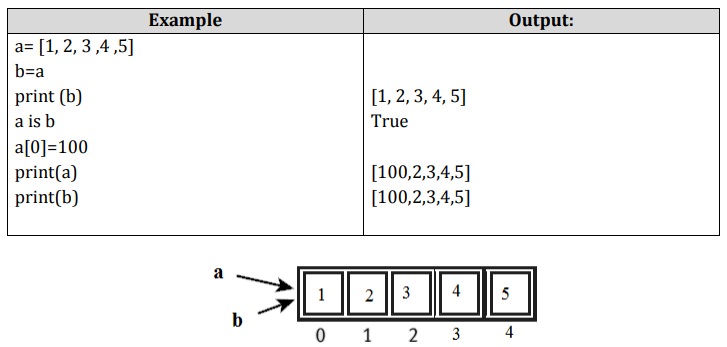Chapter: Problem Solving and Python Programming : Lists, Tuples, Dictionaries
Lists - Python
Lists
· List is an ordered sequence of items. Values in the list are called elements / items.
· It can be written as a list of comma-separated items (values) between square brackets[ ].
· Items in the lists can be of different data types.
Operations on list:
1. Indexing
2. Slicing
3. Concatenation
4. Repetitions
5. Updating
6. Membership
7. Comparison

List slices:
List slicing is an operation that extracts a subset of elements from an list and packages them as another list.
Syntax:
Listname[start:stop]
Listname[start:stop:steps]
v default start value is 0
v default stop value is n-1
v [:] this will print the entire list
v [2:2] this will create a empty slice

List methods:
v Methods used in lists are used to manipulate the data quickly.
v These methods work only on lists.
v They do not work on the other sequence types that are not mutable, that is, the values they contain cannot be changed, added, or deleted.
syntax:
list name.method name( element/index/list)


List loops:
1. For loop
2. While loop
3. Infinite loop
1. List using For Loop:
v The for loop in Python is used to iterate over a sequence (list, tuple, string) or other iterable objects.
v Iterating over a sequence is called traversal.
v Loop continues until we reach the last item in the sequence.
v The body of for loop is separated from the rest of the code using indentation.
Syntax:
for val in sequence:

2. List using While loop
v The while loop in Python is used to iterate over a block of code as long as the test expression (condition) is true.
v When the condition is tested and the result is false, the loop body will be skipped and the first statement after the while loop will be executed.
Syntax:
while (condition):
body of while
Sum of elements in list
a=[1,2,3,4,5]
i=0
sum=0
while i<len(a):
sum=sum+a[i]
i=i+1
print(sum)
Output:
15
3. Infinite Loop
A loop becomes infinite loop if the condition given never becomes false. It keeps on
running. Such loops are called infinite loop.
Example
a=1
while (a==1):
n=int(input("enter the number"))
print("you entered:" , n)
Output:
Enter the number 10
you entered:10
Enter the number 12
you entered:12
Enter the number 16
you entered:16
Mutability:
v Lists are mutable. (can be changed)
v Mutability is the ability for certain types of data to be changed without entirely recreating it.
v An item can be changed in a list by accessing it directly as part of the assignment statement.
v Using the indexing operator (square brackets[ ]) on the left side of an assignment, one of the list items can be updated.

Aliasing(copying):
v Creating a copy of a list is called aliasing. When you create a copy both list will be having same memory location. changes in one list will affect another list.
v Alaising refers to having different names for same list values.

v In this a single list object is created and modified using the subscript operator.
v When the first element of the list named “a” is replaced, the first element of the list named “b” is also replaced.
v This type of change is what is known as a side effect. This happens because after the assignment b=a, the variables a andb refer to the exact same list object.
v They are aliases for the same object. This phenomenon is known as aliasing.
v To prevent aliasing, a new object can be created and the contents of the original can be copied which is called cloning.
Clonning:
v To avoid the disadvantages of copying we are using cloning. creating a copy of a same list of elements with two different memory locations is called cloning.
v Changes in one list will not affect locations of aother list.
v Cloning is a process of making a copy of the list without modifying the original list.
1. Slicing
2. list()method
3. copy() method
clonning using Slicing
>>>a=[1,2,3,4,5]
>>>b=a[:]
>>>print(b)
[1,2,3,4,5]
>>>a is b
False
clonning using List( ) method
>>>a=[1,2,3,4,5]
>>>b=list
>>>print(b)
[1,2,3,4,5]
>>>a is b
false
>>>a[0]=100
>>>print(a)
>>>a=[100,2,3,4,5]
>>>print(b)
>>>b=[1,2,3,4,5]
clonning using copy() method
a=[1,2,3,4,5]
>>>b=a.copy()
>>> print(b) [1, 2, 3, 4, 5]
>>> a is b
False
List as parameters:
v In python, arguments are passed by reference.
v If any changes are done in the parameter which refers within the function, then the changes also reflects back in the calling function.
v When a list to a function is passed, the function gets a reference to the list.
v Passing a list as an argument actually passes a reference to the list, not a copy of the list.
Since lists are mutable, changes made to the elements referenced by the parameter change the same list that the argument is referencing.
Example 1:
def remove(a):
a.remove(1)
a=[1,2,3,4,5]
remove(a)
print(a)
Output
[2,3,4,5]
Example 2:
def inside(a):
for i in range(0,len(a),1):
a[i]=a[i]+10
print(“inside”,a)
a=[1,2,3,4,5]
inside(a)
print(“outside”,a)
Output
inside [11, 12, 13, 14, 15]
outside [11, 12, 13, 14, 15]
Example 3
def insert(a):
a.insert(0,30)
a=[1,2,3,4,5]
insert(a)
print(a)
output
[30, 1, 2, 3, 4, 5]
Related Topics